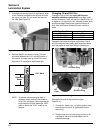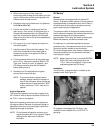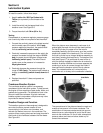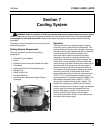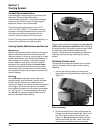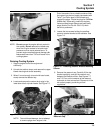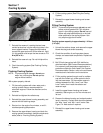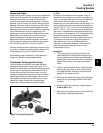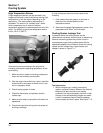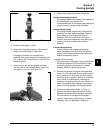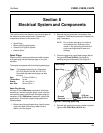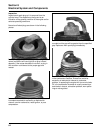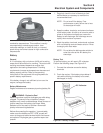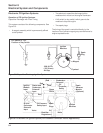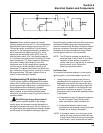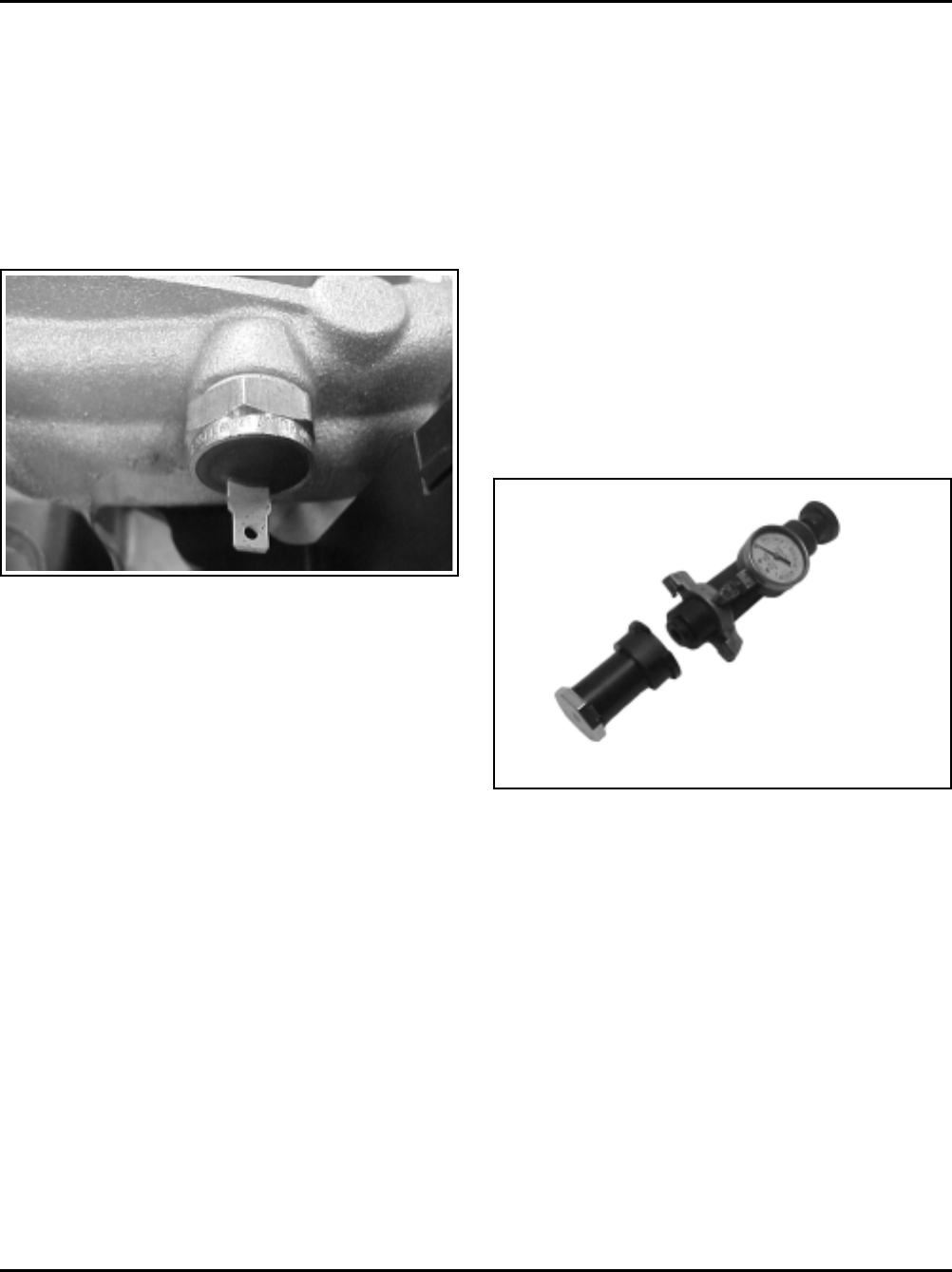
7.6
Section 7
Cooling System
High Temperature Sensor
A high temperature sensor may be mounted in the
intake manifold and is used to activate a warning light,
audible alarm, or kill the engine (depending on the
application), if the safe operating temperature is
exceeded. The sensor is a ‘‘normally open’’ switch
which completes a circuit, when the coolant
temperature reaches the rated temperature limit of the
switch. For AEGIS
™
engines the temperature sensor
limit is 123.8º C (255º F).
If none of those are found to be the cause do the
following:
1. Drain coolant from the system, so the level is
lower than the installed position of the
temperature sensor.
2. Remove and replace the temperature sensor. Use
pipe sealant with Teflon
®
on the threads.
Cooling System Leakage Test
A pressure test of the cooling system can be
performed as a relatively simple means of determining
whether the cooling system may contain a leak. A
pump/pressure type cooling system tester with the
appropriate adapter may be used to check the cooling
system and the radiator cap. A typical tester and
adapter is shown in Figure 7-11.
Figure 7-11. A Typical Tester and Adapter.
Test Instructions
1. With the engine cool, carefully remove the
radiator cap (see Pressure Radiator Cap Section).
Make sure all parts as well as the seating
surfaces of the cap and adapter are clean. Install
the cap on the corresponding adapter and make
sure it is completely seated. Install the adapter
onto the tester and lock in place. See Figure 7-12.
Figure 7-10. Temperature Switch.
If the warning device activates or the engine kills,
indicating an excessive operating temperature check
the following:
1. Make sure all air intake and cooling surfaces are
clean and free of debris accumulation.
2. After the engine has sufficiently cooled, check the
coolant level in the system to make sure it is not
low, or improperly mixed.
3. Check cooling system for leaks.
4. Check the thermostat, and pressure test the
radiator cap.
5. Make sure the water pump and the drive belt are
operational.
6. Check and inspect the wiring from the sensor for
shorting or damage.



